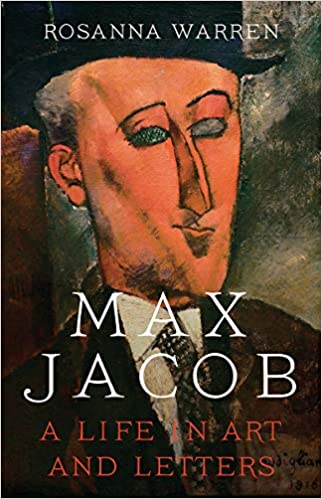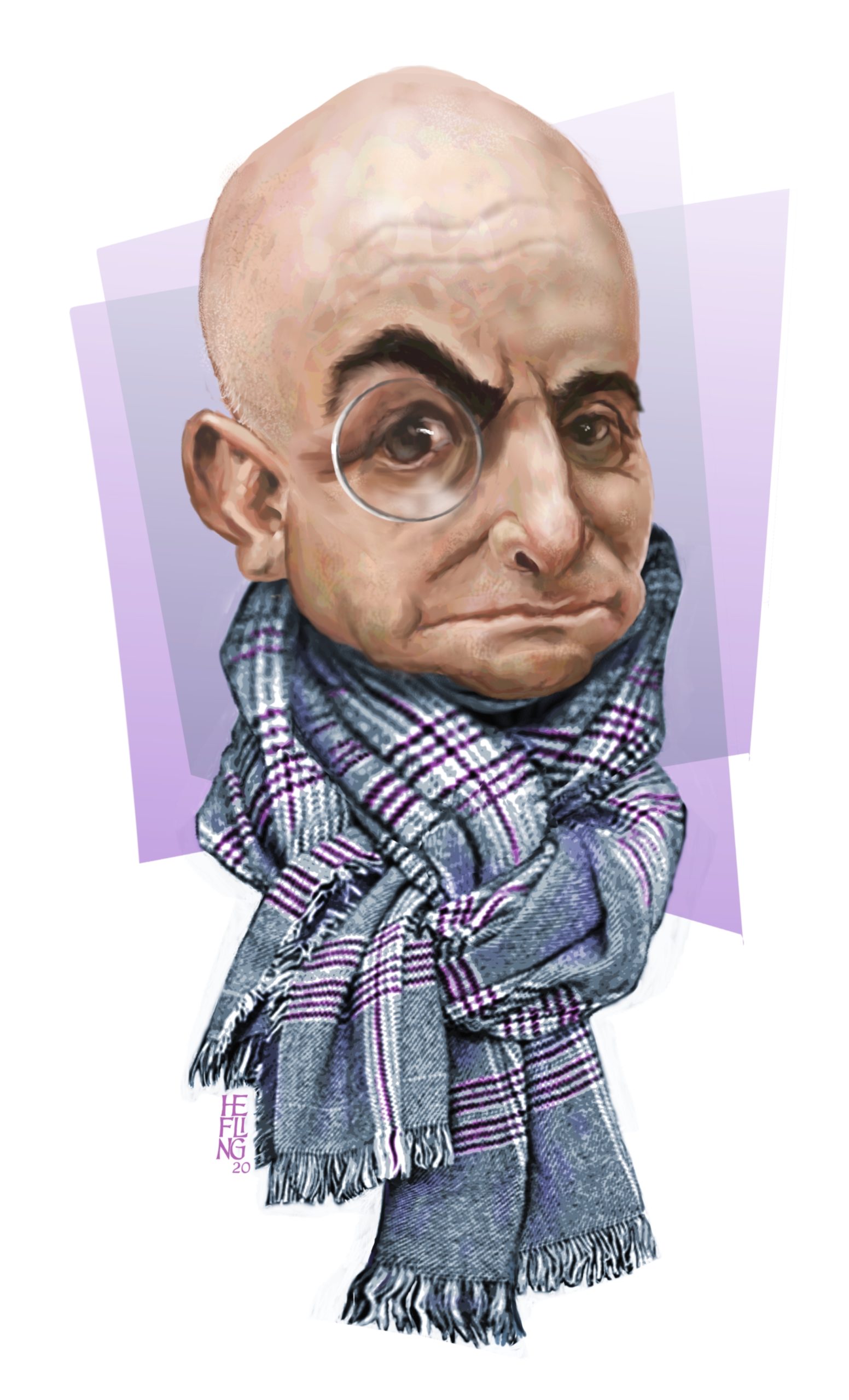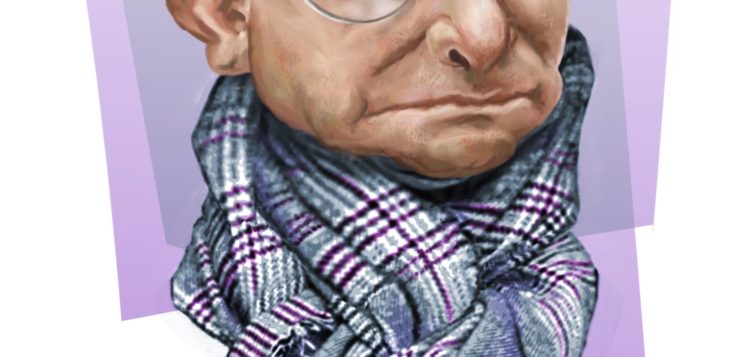 MAX JACOB
MAX JACOB
A Life in Art and Letters
by Rosanna Warren
W. W. Norton. 720 pages, $45.
IN A RECENT INTERVIEW in The New York Times Book Review, the gay writer Wayne Koestenbaum was asked which three writers, dead or alive, he would invite to a dinner party. He chose Jean Rhys, Emily Dickinson, and Max Jacob. Of the three, the least well known by most American readers must be Jacob. Today, outside his native France, Jacob has found only a modest place among his fellow 20th-century Modernists. (The encyclopedic A New History of French Literature, published by Harvard University Press, accords Jacob one sentence.) But when he was alive, he was considered a visionary genius and one of the master poets of his age—“the Mallarmé of Cubism.” André Gide compared him to Heine. Composers like Poulenc and Virgil Thomson set his poems to music; Picasso contributed illustrations to his books; Modigliani painted his portrait several times.
Born into a middle-class Jewish family in 1876, Jacob was a nervous, moody child who half-heartedly tried to kill himself several times in adolescence. At twenty, he was called up for military service but was discharged as a confirmed hysteric. According to Rosanna Warren in her new biography, Max Jacob: A Life in Art and Letters, the military discharge established a pattern of expulsion and guilt that would characterize the story of Jacob’s life.
After moving to Paris, Jacob earned a law degree but yearned for a literary life. He served stints as a journalist and an art critic before trying his hand at writing verse. Soon he and Picasso, who was to become his most important friend, were hanging out together, sharing meals, writing, and drawing. (Jacob was a more than competent painter.) He became part of a gang of fellow artists, “la bande à Picasso,” that included Matisse, Braque, and Juan Gris. Paris also afforded him the opportunity for homosexual pickups. At this stage in his life, he was particularly attracted to policemen.
At first considered just “the joker of Montmartre,” by the turn of the century Jacob was emerging as a writer of startlingly original poems. His signature style—edgy, dissonant, dreamlike, full of wordplay, mimicry, and a clash of tones—pushed language far beyond the usual poetic practices of his time. His friend and fellow poet Guillaume Apollinaire considered Jacob to be “armed with a delicious style, cutting, rapid, brilliantly and often tenderly funny, quite inaccessible to those whose concern is rhetoric and not poetry.” By 1904, Jacob had become a force to be reckoned with. Sometimes writing under the influence of hashish, opium, or ether (his favorite), he produced volumes of innovative, convention-busting poetry, stories, and novels. In contrast to what Warren calls the “swashbuckling” of the Futurists, Jacob took a more whimsical approach to his subject matter.

In the wake of his conversion to Catholicism, Jacob moved to a mostly empty monastery in the Loire Valley. “[Y]our calm fields and Loire benign/ will erase Paris from my mind,” he wrote in one prayer-like poem. But while trying to live the life of a devout provincial Catholic, he could not ignore his erotic desires. He fell into many infatuations with beautiful, and usually unattainable, young men. This vacillation between the sacred and the profane—between his Christian and erotic faiths—tortured him. Jacob was convinced that his homosexual loves would lead to damnation. His attractions were, he said, “a slavery.” Nevertheless, while often distracting, his romantic obsessions also released torrents of fine new poems.
Warren does not shy away from the seamy details of Jacob’s homoerotic affairs. In particular, she gives considerable attention to Maurice Sachs, a charming sociopath whom Jacob thought of as his adopted son-lover. Sachs, a con man extraordinaire, considered Jacob little more than an open bank account.
Like every good biography, this one is also a biography of the age in which its subject lived. Warren, a poet, translator, editor, and literary critic, originally intended the book to be about French Modernist poetry in general. Consequently, a lot of other artists make appearances. The list of Jacob’s friends and cronies comprises a Who’s Who of the artistic giants of the day. Dada, Cubism, Surrealism, Futurism—Warren gives each movement and its adherents a fair hearing.
She has clearly done her homework, combing the entire Jacob archive, which is extensive. The book is unfailingly, at times excessively, well researched. Warren seems never to have met a detail she didn’t like. However, her evocation of the various eras in which Jacob lived—the Belle Époque, pre-Great War Paris, the 1920s and ’30s, the Nazi occupation—is excellent. She gives us the world of literary and philosophical journals, the rivalries among artists, writers, and editors, and their loyalties and betrayals. But no matter how far afield she takes us, Jacob is always there. He seems to have known everyone.
Warren also trains her sights on the homophobic and anti-Semitic currents that ran through French society during this era. Jacob, she says, had to negotiate “layers of disguises and of complex feelings experienced by a gay man in that (officially) straight society.” At least one of his novels, a story of male bonding and a fantasy about creating an entirely male family, was decidedly ahead of its time.
By the time he was in his fifties, Jacob was highly honored by both Modernist and Catholic writers. In 1933, he was awarded the Légion d’honneur. Toward the end of his life, he was still experimenting with new forms but was also turning out excruciatingly pious poems. (Warren is not afraid to acknowledge Jacob’s artistic failures.) In his last years, he turned to writing letters, daily religious meditations, occasional poems, and notebooks.
Under the German occupation, Jacob had to register as a Jew. The diary he kept during the war is, Warren says, a remarkable document that mixes occult speculation, dreams, and harrowing reportage. As the roundup of French Jews began in earnest, Jacob began to feel the squeeze. He buoyed his spirits by reading Kierkegaard and Kafka. By March 1942, French Jews were being deported to Auschwitz. Jacob was arrested in February 1944 but died of pneumonia in March, just before he was to be transported.
“My life is a tango, my heart a Grand Guignol,” Jacob once declared. Warren is clear that Max Jacob was not a giant, but he was, she affirms, “a larger force in the creation of modern French literature than has been recognized.” In a society that treated Jews and homosexuals as worthless, Jacob triumphed in his own quirky, unconventional way, creating something admirable from the multiple and contradictory facets of his personality. The poet Louis Émié noted that one had to accept Jacob as he was, “with his reversals, his contradictions, his vertiginous multiplicity, always sincere, too sincere perhaps, in spite of himself.” Rosanna Warren’s impressive achievement allows us to accept, and maybe even to fall in love with, an almost forgotten French writer.
Philip Gambone’s new book, As Far As I Can Tell: Finding My Father in World War II, is forthcoming from Rattling Good Yarns Press.






